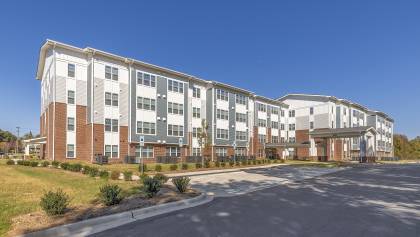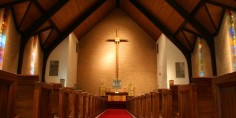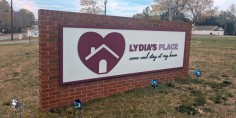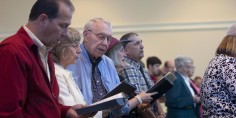
As a devout United Methodist, James B. Duke, founder of The Duke Endowment, recognized the critical importance of churches as centers of community stability, particularly in rural areas. “It is to these rural districts that we are to look for the bone and sinew of our country,” he wrote in the Endowment’s Indenture of Trust.
Over the past century, interactions between communities and local churches have changed. To better engage with their communities, churches are reimagining ways to take more of their ministries into the geographies they serve and connect with individuals and families in ways that are more relevant to their everyday lives. In a growing number of communities, rethinking the ministry leads to reimagining the use of church buildings as well.
In 2002, the Endowment created Wesley Community Development (Wesley CDC), an affiliate ministry of the Western North Carolina Conference of the United Methodist Church, to build affordable housing in rural communities. Leveraging that initial $1.5 million investment more than two decades ago, Wesley CDC has developed in excess of $130 million in real estate and has another $30 million actively under development.
But housing is only one area of need in communities, and Wesley CDC and the Endowment began to consider another real estate asset: church properties themselves. As a team, we began to ask, “How are we using church properties now, and can we do so more effectively and meaningfully for ministry?”
Research funded by the Endowment in 2018 painted a clear picture. The two UMC conferences in North Carolina hold nearly 16 million square feet of church properties between them with a total tax value of more than $2 billion, but those properties are currently in use less than 10 percent of the time. That low level of use, combined with the cost to maintain mostly empty buildings, signaled an opportunity to help rural churches think creatively about using their properties for new purposes.
In 2015, Wesley CDC began a program called Seeds of Change to introduce congregations to the idea of redevelopment. The Endowment awarded a four-year, $2.5 million grant in 2019 to help Wesley CDC expand that work. Since Seeds of Change began, 94 churches have completed or are in the midst of reuse or redevelopment projects, and 27 more have expressed their interest in doing so.
The team at Wesley CDC begins by understanding the programming and ministries of each church so that any reuse project will support those goals. The team then provides clear data about how much every room in a church building is used, how much each costs the church and where the best opportunities for reuse lie, as well as a financial projection for the next 10 – 20 years based on current ages of the congregation. Once churches have that data, the pathway to reuse or redevelopment becomes clearer.
There are examples of creative reuse throughout North Carolina. Cramer Memorial UMC in Cramerton, N.C. transformed an education building into a warm and welcoming counseling center. Other churches have created a center for adult day respite care and a center for autistic children. Still others are exploring ways to support children and young adults exiting foster care.
Housing is proving to be a popular, and needed, form of redevelopment. Some churches are repurposing existing buildings, such as the former Calvary UMC in Asheboro, N.C. which transformed its 8,000 square feet into the first homeless shelter for women and children in Randolph County – Lydia’s Place. The parsonage was renovated into a transitional rental for shelter residents to take the next step to housing stability. Recognizing a need for permanent affordable housing, the church is also considering the possibility of building affordable housing on its remaining land.
In other communities, churches are tearing down existing buildings to build market-rate housing that provides substantial revenue for new ministry opportunities. Congregations that take this approach are constructing new multi-purpose, community-centered spaces for worship and ministry or merging with existing churches to strengthen their faith community. Proceeds from the sale are used for a variety of ministry possibilities including affordable housing.
Like the churches we serve, working with Wesley CDC on adaptive reuse has helped the Endowment think more creatively as we identify assumptions, test them with learning questions and gain new understanding and ideas. It also has allowed us to support the work in ways beyond grantmaking. Sharing research, data and ideas has resulted in mutual learning and progress. As Joel Gilland, Wesley CDC’s president and CEO, shared with us, “Intellectual support is just as important as the financial piece.”
Working on adaptive reuse projects helps churches get to know and understand the people in their communities better and engage with them in more relevant and meaningful ministry. Destruction from hurricanes, wildfires, floods and other natural disasters in recent years have spurred The Duke Endowment and Wesley CDC to think even more about the potential for working with rural churches in devastated communities to rebuild and repurpose their properties into structures that are designed to withstand future disasters and provide safety and stability for area residents.
Adaptive reuse of church properties can give congregations and communities a new lease on life — structurally and spiritually. When buildings are reimagined as places of service, UMC Christian beliefs are made manifest, filling out the “bone and sinew” Mr. Duke described a century ago.



